 |
|
The James Bond film
franchise celebrated its 21st anniversary in 1983 with the release of
Octopussy – Roger Moore’s penultimate appearance as 007. As the
thirteenth instalment of the long-running series reaches its 40th
Anniversary in 2023, KEVIN HARPER looks back at the making of Octopussy,
which significantly out-performed Sean Connery’s simultaneous rival
comeback as James Bond in Never Say Never Again at the box-office
in 1983. |
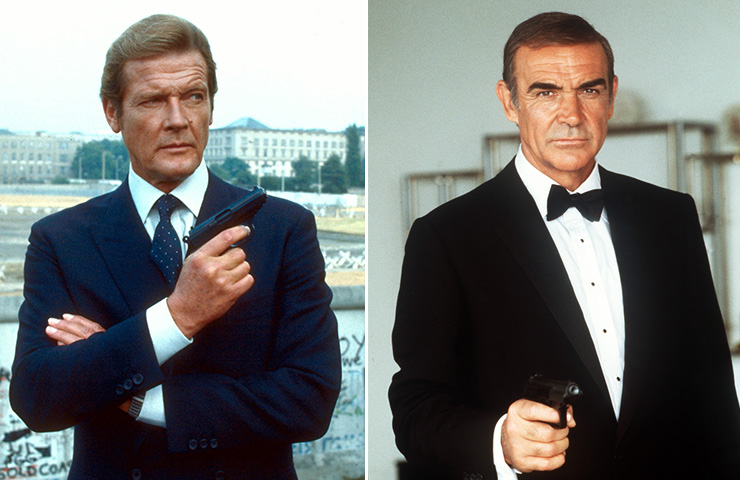 |
|
After the outer space
excess of Moonraker (1979), the James Bond films returned to earth
with a more realistic storyline in For Your Eyes Only (1981); which
was based largely on the Ian Fleming short story of the same name, with
elements of RISICO, and an unused sequence from LIVE AND LET DIE thrown in
for good measure. The resulting film was considered by many fans to be
Roger Moore’s best so far, and was also particularly successful at the
box-office, helping ailing studio United Artists after the financial
failure of Michael Cimino’s Heaven’s Gate (1980). Keen to
capitalise on the success of For Your Eyes Only, the studio greenlit
another James Bond film to be released at Christmas 1982. The title
Octopussy had already been revealed at the end of For Your Eyes
Only, but at this stage no storyline had been developed. Within a
month of the announcement that a new James Bond film was about to go into
production, the Transamerica Corporation sold United Artists to
Metro-Goldwyn-Mayer for $380 million, and the prospect of another 007
adventure on the production slate proved a great incentive for any other
studio wishing to acquire a stake in the rights to put James Bond on
screen. The new company was branded MGM/UA, with United Artists remaining
as a separate production entity. This meant that the rights to produce
James Bond films were now shared equally between the Broccoli family (as
part of their holding company DANJAQ), and MGM, who would finance and
distribute the new film. |
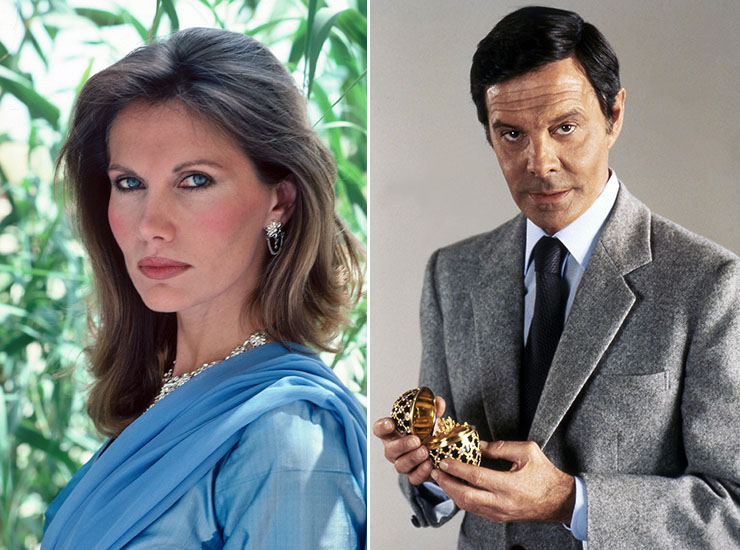 |
|
The first story treatment
for Octopussy saw the return of Ernst Stavro Blofeld as the main
protagonist, which was an unusual move given the legal complications still
surrounding the character. Even the bald-headed, white cat stroking
wheelchair-bound figure despatched by James Bond in the pre-credit
sequence of For Your Eyes Only (1981) was not named for fear of
legal reprisals from Kevin McClory – whose own remake of Thunderball,
now entitled Never Say Never Again finally went into production in
September 1982 – with the original 007 Sean Connery reprising his role as
Ian Fleming’s secret agent. The original Octopussy treatment saw
Blofeld planning to assassinate M and replace him with his chief of staff
Villiers, who turns out to be a mole SPECTRE agent. Bond teams up with
‘Octopussy’ and Kamal Khan, who at this stage was an old school friend
working in the Afghan resistance. Blofeld’s army chief was named Smythe –
a character lifted from Ian Fleming’s short story OCTOPUSSY. The initial
storyline was further developed into a 62-page treatment by director John
Glen, producer Albert R. Broccoli and his stepson Michael G. Wilson,
working alongside long-time Bond screenwriter Richard Maibaum. Dated
September 3, 1981 the new treatment retained Blofeld as the main
antagonist, but dropped Kamal Khan, and now had the story based in Tokyo.
Another draft was delivered at the end of the month which dropped Blofeld,
made Octopussy more villainous, and with the story now having more of a
Cold War angle with a nuclear threat introduced into the narrative. |
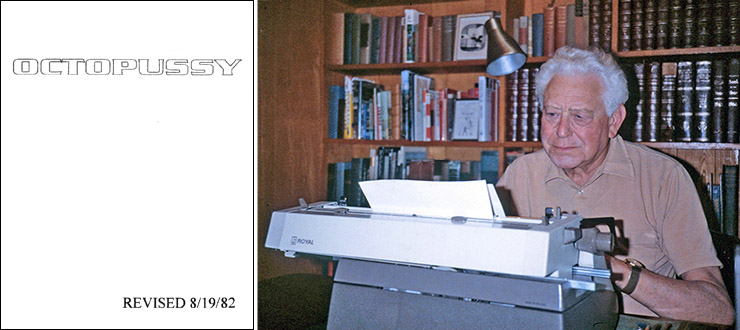 |
|
George MacDonald Fraser
(1925-2008) was then hired to work on a final screenplay. Fraser was
best-known for his long-running series of historical novels featuring the
Victorian military hero Flashman – a character who had originally appeared
as a coward and bully in the 1857 novel Tom Brown’s School Days by
Thomas Hughes. With his background as a journalist and historian, Fraser
developed the storyline of Octopussy, now set in India, to include
elements of Ian Fleming’s short stories OCTOPUSSY and THE PROPERTY OF A
LADY, which incorporated the Faberge egg and Sotheby’s auction into the
narrative. The story was still being developed into late 1981 and early
1982, with Fraser ultimately delivering five drafts of the screenplay.
|
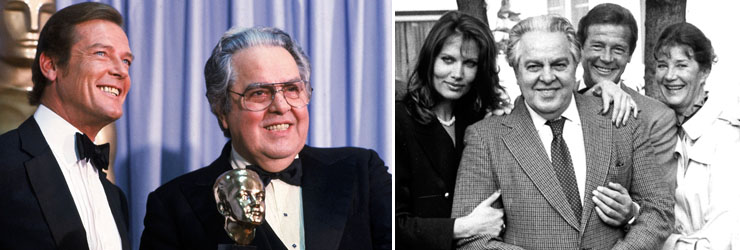 |
|
ABOVE: (left) March
29, 1982 – Roger Moore presents James Bond producer Albert R.
‘Cubby’ Broccoli with the Irving G. Thalberg Memorial Award from
the Academy of Motion Picture Arts and Sciences. (right) Maud
Adams, Roger Moore and Lois Maxwell jokingly ‘recreate’ the
Octopussy poster artwork with ‘Cubby’ Broccoli in the garden
area of The Dorchester Hotel, Park Lane on the morning of the
film’s premiere. |
|
|
|
Prior to shooting on
Octopussy producer Albert R. Broccoli was informed that he would be
the recipient of the Irving G. Thalberg Memorial Award from the Academy of
Motion Picture Arts and Sciences. ‘Cubby’ Broccoli was presented with the
award by Roger Moore at the fifty-fourth Academy Awards on March 29, 1982
held at the Dorothy Chandler Pavilion in Los Angeles. Cubby graciously
paid tribute to his former producing partner Harry Saltzman, with whom he
was reunited at the London premiere of For Your Eyes Only (1981)
for the first time since their acrimonious split in 1975. Although Roger
Moore presented the award he had yet to sign a contract to return as 007.
Among those guests attending a party a week later at the famous Chasen’s restaurant
in Hollywood
to celebrate Cubby’s birthday were Cary Grant (best man at his 1959
wedding to Dana), John Gavin (signed as James Bond in 1971 but paid off
when Sean Connery returned for Diamonds Are Forever), David Hedison
(Felix Leiter in Live And Let Die), Christopher Lee (Scaramanga in
The Man With The Golden Gun), as well as Hollywood royalty
including director Billy Wilder; and screen legends Gene Kelly and James
Stewart. Also attending was Sean Connery, who shared a table with Roger
Moore and American actor Gregory Peck and their wives. |
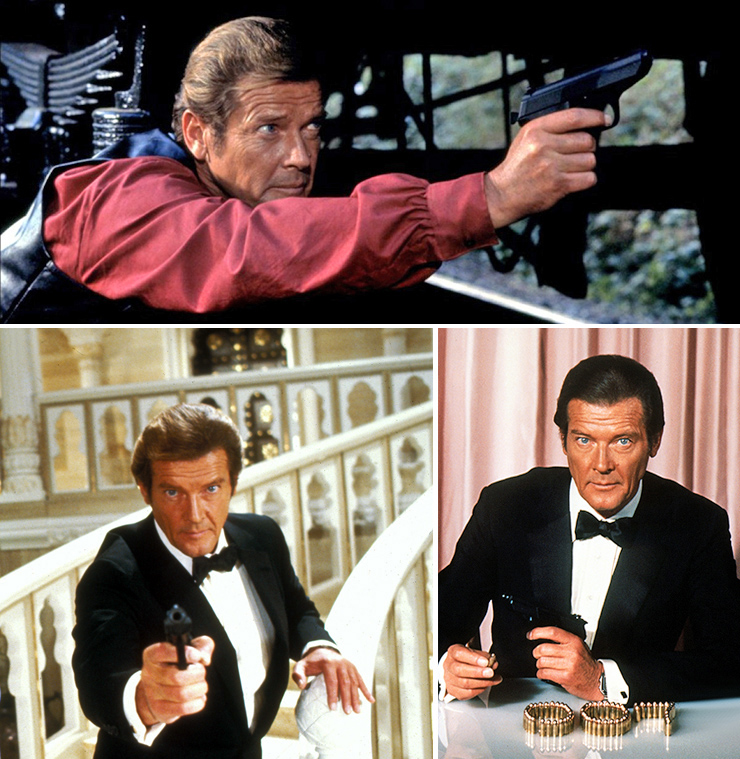 |
|
ABOVE: One Moore
time? Roger Moore was initially reluctant to reprise the role of
James Bond for a sixth time in Octopussy. Believing it
would be the last time he would play Bond, Moore eventually agreed
to return to the role after producer Albert R. Broccoli made him
an offer he couldn’t refuse. Other actors had tested for the 007
role in 1982, but with the prospect of a rival film starring the
original 007 Sean Connery also in production, Moore was still
the only man for the job in the eyes of the public and filmmakers
alike. |
|
|
|
CONTINUED |
|



